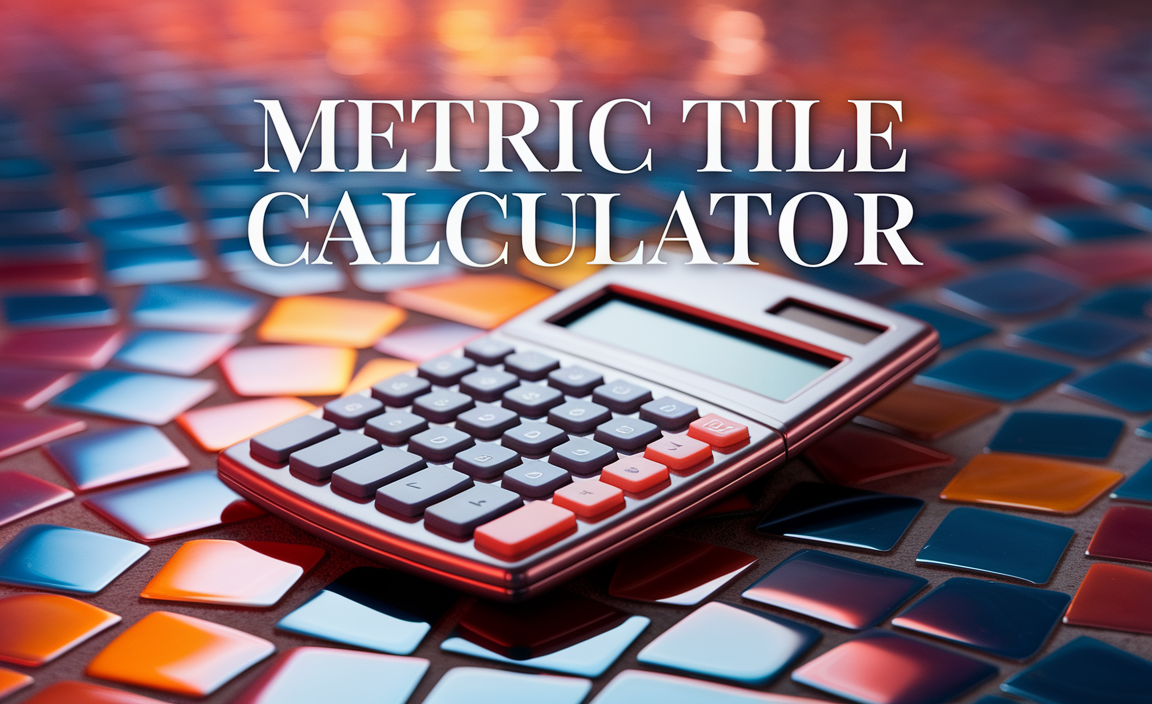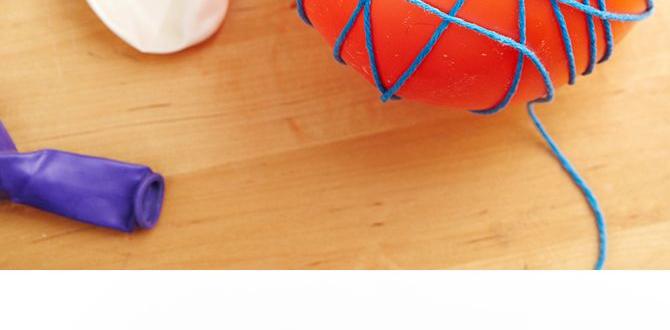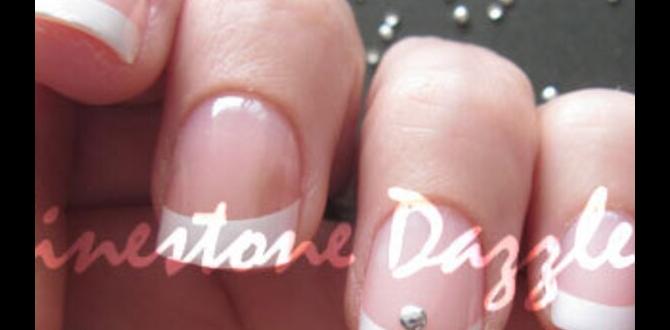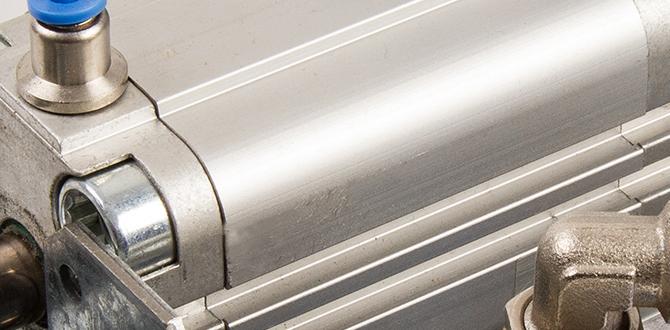When you’re working on trim, two tools often come up: the brad nailer and the pin nailer. Have you ever wondered which one to pick? It’s a common question for DIYers and pros alike. A brad nailer drives thicker nails, while a pin nailer uses smaller ones. You might think they are the same, but they serve different purposes.
Imagine you are trying to attach delicate crown molding. Would you trust strong, thick nails that leave marks, or tiny ones that hold well but are less visible? The choice can affect both the look and durability of your project.
Surprisingly, many people choose the wrong tool and end up unhappy with the results. Learning about the brad nailer versus the pin nailer can make a big difference. Let’s dive in and explore how each tool works. You’ll discover which one fits your needs best.
Table of Contents
Brad Nailer Vs Pin Nailer For Trim: A Comprehensive Comparison
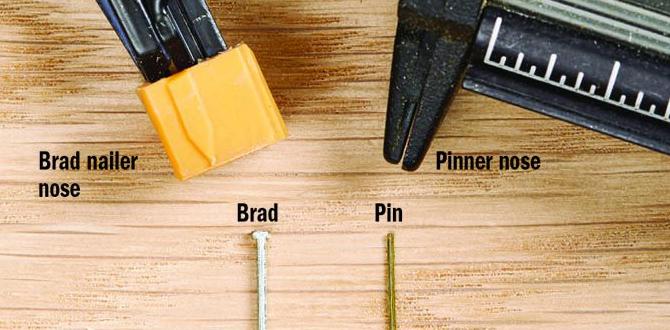
Brad Nailer vs Pin Nailer for Trim
When it comes to finishing touches for trim, understanding the difference between a brad nailer and a pin nailer can make a big difference. A brad nailer uses 18-gauge nails, providing strong support for heavier trim. It’s perfect for securing larger pieces without splitting the wood. On the other hand, a pin nailer uses thinner 23-gauge pins, making it ideal for delicate work. It leaves tiny holes that are easy to hide. Choosing the right tool depends on the job. Do you need strength or precision?Understanding Nail Types
Differences between brad nails and pin nails. Common applications for each type of nail.When it comes to nails, size matters. Brad nails are thicker and longer, holding bigger pieces together. They’re great for attaching trim and molding, making your house look fancy. On the other hand, pin nails are like the tiny ninjas of the nail world. They’re super thin and barely leave a mark. They’re perfect for smaller projects, like delicate crafts or thin panels. So, remember: for heavier stuff, go big with brad nails; for light stuff, honor the pin nails!
| Nail Type | Size | Common Use |
|---|---|---|
| Brad Nail | 18 gauge | Trimming and molding |
| Pin Nail | 23 gauge | Small crafts and thin panels |
What is a Brad Nailer?
Features and specifications of a brad nailer. Advantages of using a brad nailer for trim work.A brad nailer is a handy tool for many trim tasks. It uses small nails, called brads, which are perfect for holding things together without splitting the wood. One cool feature of a brad nailer is its size. It’s lightweight and easy to maneuver. Plus, it doesn’t leave big holes, making your work look cleaner.
Using a brad nailer has many advantages for trim work. It helps you finish projects faster, saves time, and reduces the chances of wood damage. Did you know some brad nailers even have adjustable depths? This feature lets you set how deep the nail goes, giving you control. Talk about a tool with a mission!
| Feature | Description |
|---|---|
| Lightweight | Easy to carry and use for long periods |
| Depth Adjustment | Control how deep nails go into the wood |
| Small Nails | Minimize damage to wood while achieving strength |
What is a Pin Nailer?
Features and specifications of a pin nailer. Advantages of using a pin nailer for trim work.A pin nailer is a nifty tool that shoots tiny nails, called pins. These pins are small, so they leave less of a mark. Ideal for trim work, pin nailers can fit into tight spots easily. They are lightweight, making them comfy to use for long periods. You can enjoy quick fastening without worrying about big holes in your projects.
| Feature | Specification |
|---|---|
| Pin Size | 23-gauge |
| Weight | Lightweight |
| Power Source | Pneumatic or Battery |
The real sweet spot? Pin nailers don’t split wood! This means your trim looks clean and professional. Plus, you can use them on delicate materials without worries. What a relief, right? Your trim will thank you by looking fabulous!
Comparison of Brad Nailers and Pin Nailers
Size and thickness of nails. Holding power and finish quality differences.Both brad nailers and pin nailers serve unique purposes. Their differences lie mainly in nail size and holding power. Brad nailers use thicker nails, usually 18-gauge, while pin nailers use thinner nails, typically 23-gauge. This affects how well they hold materials together. Here’s a quick look:
- Nail Size: Brad nailers use 18-gauge nails, while pin nailers use 23-gauge.
- Holding Power: Brad nails offer more strength for heavier materials.
- Finish Quality: Pin nails leave smaller holes, making them great for delicate trim work.
Using the right tool ensures a neat finish and strong hold. Choosing between the two depends on the project at hand.
What are the key differences between brad nailers and pin nailers?
Brad nailers have larger nails and provide stronger holding power, while pin nailers use smaller nails for a finer finish.
Best Uses for Brad Nailers
Ideal project types for brad nailers. Examples of trim work suitable for brad nailers.Brad nailers are perfect for light to medium trim work. They shine when it comes to hanging molding, attaching baseboards, or adding decorative trim to walls. Their small nails don’t split the wood, making projects look neat and tidy. Think of them as the tiny superheroes of woodworking. They’re also great for furniture assembly, like chair railings or picture frames. They can make your home look magazine-ready in no time!
| Project Type | Best Trim Applications |
|---|---|
| Baseboards | Easy attachment without splits |
| Molding | Perfect for that polished look |
| Furniture Assembly | Great for lightweight projects |
Best Uses for Pin Nailers
Ideal project types for pin nailers. Examples of trim work suitable for pin nailers.Pin nailers are super tools for small projects. They work best for delicate trim work, like crown molding or baseboards. Need to attach thin pieces of wood? Pin nailers can do it without splitting the material. They are ideal for projects where the nails should be almost invisible—not like that one time Uncle Joe tried to fix his screen door!
| Project Type | Why Use Pin Nailers? |
|---|---|
| Crown Molding | Perfect for light-weight wood and tight corners. |
| Baseboards | Keeps them snug without leaving big holes. |
| Panel Molding | Great for adding style without sacrificing precision. |
So, for neat and tidy trim work, grabbing a pin nailer is the way to go. Plus, you won’t need a magician to hide the nail holes!
Cost Considerations
Pricing differences between brad nailers and pin nailers. Longterm investment considerations for each tool.Buying a tool can feel like deciding between a pizza or tacos—hard to choose! Brad nailers usually cost a bit more than pin nailers. Prices can start around $60 for a pin nailer and $80 for a brad nailer. But remember, a brad nailer is like a sturdy friend ready for long-term projects. Think ahead! Investing in quality can save you money later on. In the world of tools, “penny wise, pound foolish” may just mean using a weak pin instead of a strong brad.
| Tool Type | Starting Cost | Long-term Benefits |
|---|---|---|
| Brad Nailer | $80+ | Great for bigger jobs! |
| Pin Nailer | $60+ | Perfect for detailed work! |
User Preferences and Recommendations
Community feedback and expert recommendations. Factors to consider when choosing between the two.Home improvement fans have plenty to say about their favorite tools. Community feedback shows brad nailers are great for thicker trim, while pin nailers shine with delicate projects. Experts recommend thinking about your intended use. Do you need strength or precision? Factors like ease of use and nail size come into play too. Remember, a tool’s weight might not help much if you can’t lift it!
| Tool Type | Best Use | User Preference |
|---|---|---|
| Brad Nailer | Thicker trims | More users prefer |
| Pin Nailer | Delicate work | Less frequent, but precise |
Maintenance and Care
Maintenance tips for brad nailers. Maintenance tips for pin nailers.Keeping your nailers happy is key! For brad nailers, clean the nozzle after each use. Dust and debris can cause misfires, which is not fun. Make sure to check the air filter too. If it looks dirty, give it a wash!
For pin nailers, remember to oil the tool regularly. A little oil goes a long way! It keeps things smooth and helps avoid clogs. Don’t forget to inspect the magazine weekly. A jammed pin can turn your project into a comedy show!
| Nailer Type | Maintenance Tip |
|---|---|
| Brad Nailer | Clean the nozzle |
| Pin Nailer | Oil the tool regularly |
Conclusion
In summary, both brad nailers and pin nailers are useful for trim projects. Brad nailers use thicker nails, offering strong support, while pin nailers are perfect for delicate work. Choose a brad nailer for sturdier trim and a pin nailer for fine details. We recommend trying both or reading more to find what suits your needs best!FAQs
Here Are Five Related Questions About Using A Brad Nailer Versus A Pin Nailer For Trim Work:A brad nailer uses small nails called brads. These nails are stronger and hold things better. A pin nailer uses even smaller pins. They’re great for delicate work but can be less strong. You should choose based on how tough you need the hold to be!
Sure! Please provide the question you’d like me to answer.
What Are The Primary Differences Between A Brad Nailer And A Pin Nailer In Terms Of Nail Size And Holding Power For Trim Applications?A brad nailer shoots thicker nails than a pin nailer. The nails from a brad nailer are usually about 18-gauge. They hold things together better, so they are great for trim work. A pin nailer uses thinner nails, like 23-gauge, which are less strong. Pin nailers leave smaller holes, but they don’t hold as tightly as brad nails.
In What Situations Would A Brad Nailer Be Preferred Over A Pin Nailer For Attaching Trim And Moldings?You would choose a brad nailer when you need stronger support. It uses bigger nails that hold better than the tiny ones from a pin nailer. If you’re working with thicker wood or heavy trim, brad nails are better. They also cover larger areas without bending. So, for strong and secure attaching, brad nailers are the way to go!
Can A Pin Nailer Provide Sufficient Holding Strength For Heavier Trim Materials, Or Is A Brad Nailer Necessary?A pin nailer is great for small, light pieces but isn’t strong enough for heavy trim. You will need a brad nailer for that. Brad nailers use bigger nails, which hold heavier things better. If you want your trim to stay put, choose a brad nailer.
What Are The Advantages And Disadvantages Of Using Each Type Of Nailer When It Comes To Finishing Details And Avoiding Visible Marks On Trim?When you use a brad nailer, it makes small holes that are easy to cover. This is great for detailed work. However, it might not hold heavy pieces very well. A finish nailer uses thicker nails, so it holds better. But, it leaves bigger holes that can show and need more fixing.
How Does The Power And Depth Adjustment Feature Of A Brad Nailer Compare To That Of A Pin Nailer When Working On Various Trim Styles?When using trim tools, a brad nailer and a pin nailer have different features. The brad nailer has power and depth adjustments. These help control how deep the nail goes and how strong it drives. With a brad nailer, you can easily use it on thicker or heavier trim styles. The pin nailer is great for thin trims, but usually doesn’t have as many adjustments.
{“@context”:”https://schema.org”,”@type”: “FAQPage”,”mainEntity”:[{“@type”: “Question”,”name”: “Here Are Five Related Questions About Using A Brad Nailer Versus A Pin Nailer For Trim Work:”,”acceptedAnswer”: {“@type”: “Answer”,”text”: “A brad nailer uses small nails called brads. These nails are stronger and hold things better. A pin nailer uses even smaller pins. They’re great for delicate work but can be less strong. You should choose based on how tough you need the hold to be!”}},{“@type”: “Question”,”name”: “”,”acceptedAnswer”: {“@type”: “Answer”,”text”: “Sure! Please provide the question you’d like me to answer.”}},{“@type”: “Question”,”name”: “What Are The Primary Differences Between A Brad Nailer And A Pin Nailer In Terms Of Nail Size And Holding Power For Trim Applications?”,”acceptedAnswer”: {“@type”: “Answer”,”text”: “A brad nailer shoots thicker nails than a pin nailer. The nails from a brad nailer are usually about 18-gauge. They hold things together better, so they are great for trim work. A pin nailer uses thinner nails, like 23-gauge, which are less strong. Pin nailers leave smaller holes, but they don’t hold as tightly as brad nails.”}},{“@type”: “Question”,”name”: “In What Situations Would A Brad Nailer Be Preferred Over A Pin Nailer For Attaching Trim And Moldings?”,”acceptedAnswer”: {“@type”: “Answer”,”text”: “You would choose a brad nailer when you need stronger support. It uses bigger nails that hold better than the tiny ones from a pin nailer. If you’re working with thicker wood or heavy trim, brad nails are better. They also cover larger areas without bending. So, for strong and secure attaching, brad nailers are the way to go!”}},{“@type”: “Question”,”name”: “Can A Pin Nailer Provide Sufficient Holding Strength For Heavier Trim Materials, Or Is A Brad Nailer Necessary?”,”acceptedAnswer”: {“@type”: “Answer”,”text”: “A pin nailer is great for small, light pieces but isn’t strong enough for heavy trim. You will need a brad nailer for that. Brad nailers use bigger nails, which hold heavier things better. If you want your trim to stay put, choose a brad nailer.”}},{“@type”: “Question”,”name”: “What Are The Advantages And Disadvantages Of Using Each Type Of Nailer When It Comes To Finishing Details And Avoiding Visible Marks On Trim?”,”acceptedAnswer”: {“@type”: “Answer”,”text”: “When you use a brad nailer, it makes small holes that are easy to cover. This is great for detailed work. However, it might not hold heavy pieces very well. A finish nailer uses thicker nails, so it holds better. But, it leaves bigger holes that can show and need more fixing.”}},{“@type”: “Question”,”name”: “How Does The Power And Depth Adjustment Feature Of A Brad Nailer Compare To That Of A Pin Nailer When Working On Various Trim Styles?”,”acceptedAnswer”: {“@type”: “Answer”,”text”: “When using trim tools, a brad nailer and a pin nailer have different features. The brad nailer has power and depth adjustments. These help control how deep the nail goes and how strong it drives. With a brad nailer, you can easily use it on thicker or heavier trim styles. The pin nailer is great for thin trims, but usually doesn’t have as many adjustments.”}}]}
